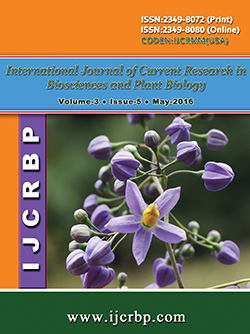 |
Online ISSN : 2349-8080 Issues : 12 per year Publisher : Excellent Publishers Email : editorinchiefijcrbp@gmail.com |
The coexistence of hypertension and diabetes mellitus increases the incidence of cardiovascular events and long-term morbidity and mortality. The aim of this study was the assessment of blood pressure control in Sudanese patients with type 2 diabetes mellitus. This descriptive, cross-sectional study includes 124 type 2 diabetic patients who were seen at the health insurance outpatient clinic in Elobied city. A questionnaire was designed for collection of socioeconomic data (gender, age, residence, occupation, and level of education) and duration of diabetes mellitus, duration of hypertension, treatment of diabetes mellitus, and treatment of hypertension. Hypertension was defined as blood pressure ≥ 140/90 or the use of antihypertensive medications. Blood pressure was measured twice in sitting position in the same visit for all patients. Fifty patients were males (40%), while 60 % were females. More than half (53.2%) of the patients belong to age group 41- 60 years. Nearly half (46%) of the patients were housewives. Fifty eight (46.8%), patients were illiterate. Seventy (56.5%), patients were hypertensive, while 54 (43.5%), patients were non-hypertensive. The antihypertensive drugs which were used include: calcium channel blockers, angiotensin receptor blockers, and angiotensin- converting enzyme inhibitors, which were used by 41%, 38% and 14% of patients respectively. Sixteen (23%), patients used combination of antihypertensive drugs in form of amlodipine and angiotensin receptor blockers or angiotensin- converting enzyme inhibitors. The mean systolic blood pressure in hypertensive patients was 150 ± 23 mmHg and the mean diastolic blood pressure was 86 ± 13 mmHg. Most patients with diabetes require combination therapy to attain a blood pressure of less than 130/80 mmHg. The choice of drugs should always include a ACE inhibitor or angiotensin receptor blocker and should usually include a diuretic. If additional therapy is needed a calcium channel blocker, beta blocker or alpha blocker may be used.
